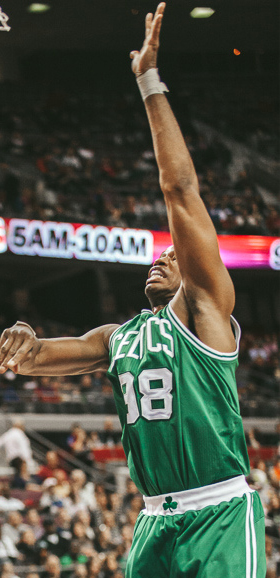My best friend in UCD is a serial-hugger. He hugs indiscriminately – men, women, children, dogs, senior lecturers and even heads of state! Sometimes there’s a bit of cheek kissing, other times not. With men he meets it’s usually a big strong hug; one arm over your shoulder, the other under the opposite arm pit. It’s diagonal in composition, and allows for good gripping and a deep intimate embrace. Occasionally there is a little bit of backslapping. Sometimes there are two hugs in the space of a short meeting, one as a greeting, one as a farewell. I’ve become accustomed to his embraces, which by Irish standards are pretty lengthy. Recently, I’ve been paying attention to men’s reactions when they receive one of my buddy’s hugs; and I must admit from a masculinities perspective it’s extremely interesting (and at times very amusing).
Media Representation of Rape Victims
28 MayLast month, the New York Times published an article about Heisman Trophy winner Jameis Winston and the controversy surrounding his award (Bogdanich 2014). Winston was accused of raping a freshman woman at Florida State University, and despite the accusation and the implications that go along with it, Winston was still awarded the premier honor in college football that not only recognizes athleticism, but character as well. After an overview of the case and a description of the poor response time from university and police officials, the article depicts the scene where the victim and her rapist met. Winston is referred to as “Mr. Winston”, while the young girl is described as “Mr. Winston’s accuser,” a 19-year-old girl, who could not legally buy alcohol, but was at the bar anyways, implying the young woman did something wrong because she was underage. Winston is described as, “A redshirt freshman quarterback, 6 feet 4 inches and 235 pounds, Mr. Winston had been a prize recruit, well-known in football circles but not yet a widely recognizable name.” She, on the other-hand, isn’t offered the same kind of praise, despite accusing “Mr. Winston” of rape. The young victim is merely described as a caricature of a college-aged drinker who got into trouble, or worse got what she deserved, because she was at the bar.
Continue reading
The Marathon and Gender Equality
19 May
By Richard Smith from Bowen Island, Canada (Chicago Marathon – the start) [CC-BY-2.0 (http://creativecommons.org/licenses/by/2.0)%5D, via Wikimedia Commons.
April marked the first installment of the Boston Marathon after the horrible terrorist acts of 2013. Although the world-renowned event will forever be linked to these atrocities, there are also acts of positive social change linked to its. Most famously, the 1967 Boston Marathon saw Kathrine Switzer become the first woman to enter the race as a numbered runner (there had actually been other women run the race unofficially before) by registering as “KV Switzer”. Her run and the attempt by a race official to remove her from the race show how sports can become an arena of progressive social change. Moreover, the history of marathon running over the past half century can also serve as a teaching tool to challenge myths about the supposed fundamental differences between men and women.
[This article first appeared at SociologyLens]
Continue reading
Throwing like a Girl? The Case for Gender Similarity in Sports
12 MayContinue reading
Masculinities 101 Week in Review
18 AprWhat did you miss last week in the realm of masculinities and gender equity news? We’ll tell ya!
This week Masculinities 101 hosted the second installment of Clay Darcy’s pub crawl narrative “drinking Down Masculinity.” In this series Darcy shows us just how much a gender lens can add to the way we see even the most everyday experiences.
On Thursday, The Guardian hosted a live Q&A session on how the development sector can engage men and boys toward gender equality. The panel included leaders of NGOs all over the world that are doing this important work.
The Shriver Report partnered with The Good Men Project to produce a list of what they believe to be the top 10 issues affecting men in 2014. Check out their list and let us know if you agree. Is there anything missing? Is there anything there that you think isn’t really an issue?
Also, a few weeks ago we briefly discussed the backlash against New York Mets player Daniel Murphy taking paternity leave. As you may recall, two New York sports talk-show hosts suggested that his wife should have scheduled a pre-emptive C-section rather than the player missing any games. But, this week, that scandal has led to a deeper discussion of paternity leave. You can find some of that discussion on Slate and on Ordinary Times.
Masculinities 101 Week in Review
11 AprDid you miss any masculinities or gender equity news this week? No worries…we’ve got you covered!
There were some wonderful posts this week at Masculinities 101. Clay Darcy began what will be a fascinating three part series on his experiences during a pub crawl. When you do gender studies, even the most mundane parts of your life are transformed—you cannot help but see gender dynamics everywhere!
Julia Meszaros let us reblog her piece from the Huffington Post, in which she dispels the stereotype of the “mail order bride” in an analysis of TLC’s show, 90 Day Fiance; Julia also wrote earlier this month on the power of whiteness in the sex tourism and international marriage industry.
But we weren’t the only ones posting great material. The Gender & Society blog gave us Heather Hlavka’s insightful but disturbing piece, Normalizing Sexual Violence. Hlavka argues that not only is sexual violence fairly commonplace for young girls, they have become used to boys’ and men’s sexual aggression, to the point where they were unlikely to report abuse and harassment. Her piece raises important questions about institutional policy, law, and sexual education.
At Sociological Images, Lisa Wade gives us a model for combatting gender policing, as Eddie Izzard defends his cross-dressing—“They’re not ‘women’s dresses.’ They’re my dresses.” (Side note: My parents are lesbians, and one of my moms self-identifies as butch. She has often been questioned—by family, friends, and even strangers—about wearing “men’s clothing.” Her response has always been, “These aren’t men’s clothes (or shoes, or haircuts, or whatever), they’re mine.”)
Mychal Denzel Smith argues at Feministing.com that there is never a defense for sexual harassment.
Finally, is a great response to the criticism baseball player, Daniel Murphy, faced when he missed a game to spend time with his newborn baby.
And for all you academics, there is a new issue of Men & Masculinities this month, with articles on men/masculinities and self-injury, mass murder, education, and philanthropy.
Men in Roller Derby: A Review of This is How I Roll
12 Mar
Last Saturday, March 8, I attended a screening of the documentary, This is How I Roll, at the Center for the Study of Men and Masculinities in the Stony Brook University Manhattan campus building. This is How I Roll traces the evolution of men’s roller derby in the United States (and to some extent, around the globe), capturing the perspectives of men who tried to enter a sport dominated by women. The film maker follows grassroots organized teams, in particular the New York Shock Exchange, who seek out a space in the sport of roller derby. Alongside the development of the men’s teams, we see the backlash from the women’s teams, players, and national organizations, including the Women’s Flat Track Derby Association. By the end of the film, the men’s teams have gained greater acceptance with the women’s organizations and they all have hopes of taking the sport to the Olympics.
After the screening, a panel—including the director, Kat Vecchio; a producer and activist, Abigail Disney; New York Stock Exchange team member, “Patrick Bateman”; and a sociology professor, Tyson Smith—spoke about the themes of gender and masculinities in the documentary. Kat Vecchio said that she made the film because she noticed the exclusionary tactics of her fellow roller derby participants when she was a member of the Gotham Girls, a famous New York City roller derby league. She likened her teammates’ exclusion of men in roller derby to men’s exclusion of women in just about every other arena. Seeing this as an opportunity to capture a growing underdog movement, she picked up her camera and started filming.
The documentary and the director’s comments brought up some larger questions with which I have been grappling and may be of interest to other scholars of gender and masculinities and activists. First, can we equate the discrimination faced by the men’s roller derby teams to women’s historical exclusion in other sports? If men wield power in the rest of the sporting world, is it fair to compare their exclusion in this one particular instance to the history of women’s exclusion from sports? On one hand, the roller derby women employed many of the same tactics used to exclude women in other sports. For example, the roller derby women explained that men’s bodies are too big for the roller derby track, an argument eerily similar to the justification for excluding women and their small bodies from the football field. On the other hand, the women were understandably protective of their sport; this was a safe space for them and something that they could claim as their own. Since sports are historically male dominated, is there some political importance to women having a sports space of their own?
The second point that I am left contemplating is the extent to which activists can harness situations like this to engage men in gender equality projects. After the screening, an audience member asked if the men felt any solidarity with female athletes who are marginalized in other sports, such as the WNBA. Though it seemed like “Patrick Bateman,” a member of the New York Shock Exchange, felt compassion for female athletes, it was clear that the men’s roller derby movement is not a political one. Men’s roller derby teams are not trying to produce greater gender equality through their sporting participation; they just want to play. This is a moment, though, in which men can understand the experience of oppression based on gender, a situation in which they rarely find themselves; moreover, the men who participate display non-normative masculinities, and are relatively open to queer and gender nonconforming teammates. It seems, then, that this is a space that could be harnessed for gender activism. How can we translate individual compassion into political sensitivity and action? How do we link these common experiences to produce solidarity and create social change?
I encourage you all to see This is How I Roll. In addition to giving us food for thought about gender and masculinities, it is a really well done documentary that will surely keep you entertained.
Make sure to check this blog and the Center for the Study of Men & Masculinities website for information about upcoming sponsored events.
Shifting Hegemonic Masculinity? Gay Male Athletes and Discourses of Masculinity
5 Mar
By mariselise derivative work: Steffaville [CC-BY-2.0], via Wikimedia Commons.
Continue reading
Masculinities 101 Week in Review: February 28, 2014
28 FebIn the news…
Jack Burkman, a Washington lobbyist, wants to propose legislation that would ban gays from playing in the NFL. He believes that such a bill is needed to protect the field, locker room, and our national character. Michael Sam, an openly gay NFL player, responded by suggesting he’d need a time machine, not a Congressional bill, if he wanted to keep gays out of sports. Also in sports news, the first openly gay NBA player Jason Collins was recently signed to the Nets, and fans showed overwhelming support, buying his jersey in record numbers.
Other homophobic legislation continues to spring up around the nation, but not without outspoken opposition. Legislatures in Kansas, Idaho, Missouri, Arizona, Tennessee and Georgia have all recently been grappling with bills that would make discrimination against LGBT people legal, under the guise of protecting religious freedom. Ostensibly, it is a violation of religious freedom for proprietors of various businesses to be forced to serve or deal with openly gay customers. Many have compared these bills to Jim Crow era discrimination against African Americans. Arizona’s bill made it the furthest, but was vetoed by the Governor. See the histories and statuses of these bills (and others around the country) here.
Mounting racial tensions at the University of Michigan recently came to a head, with the university’s Black Student Union protesting low (and steadily decreasing) minority enrollment. Recent studies have shown that racism and racial isolation are big problems at many of the nation’s leading universities.
Finally, last week’s verdict in the Michael Dunn case continues to spark debate. Dunn was convicted of three counts of attempted second degree murder for shooting at an SUV full of black teenagers, but not convicted of the actual murder of 17 year old Jordan Davis, who died as a result of the shooting. For many in Florida and around the country, this incident is eerily familiar, recalling the death of Trayvon Martin. In this op-ed, Travis Gosa explains these recent tragedies by looking at a crisis in white masculinity.
Interesting reads…
The February issue of Gender & Society has an incredible array of articles on men and masculinities, and the sex/gender system.
A Duke University student outs herself as a porn actress online here. Her post is brave, eloquent, and insightful. She discusses her (rewarding and empowering) relationship with pornography as well as the bullying she’s experienced from other students after having her secret revealed. And although she doesn’t theorize masculinities, her post offers a lot of things for masculinities scholars to consider.
There were some interesting posts on Feministing: Perez Hilton appropriates black femininity, and yes, it’s about white male privilege. And apparently, holding a door open for a man makes him feel less manly…patriarchy just never lets up! And a great one at Jezebel covering the Men’s Rights Movement.
(Find interesting articles, videos, blogposts related to masculinities? Send them our way and we’ll try to include them in our next Week in Review)
The elusive gay male soccer player in Germany – Homophobia and Solidarity
5 Feb
“Fans against Homophobia” display in the stadium of German soccer club Mainz 05, celebrating the 5 year anniversary of their LG(BT?)-fan club. [Source: http://www.meenzelmaenner.de/resources/_wsb_500x276_Choreo5.jpg%5D
Continue reading




